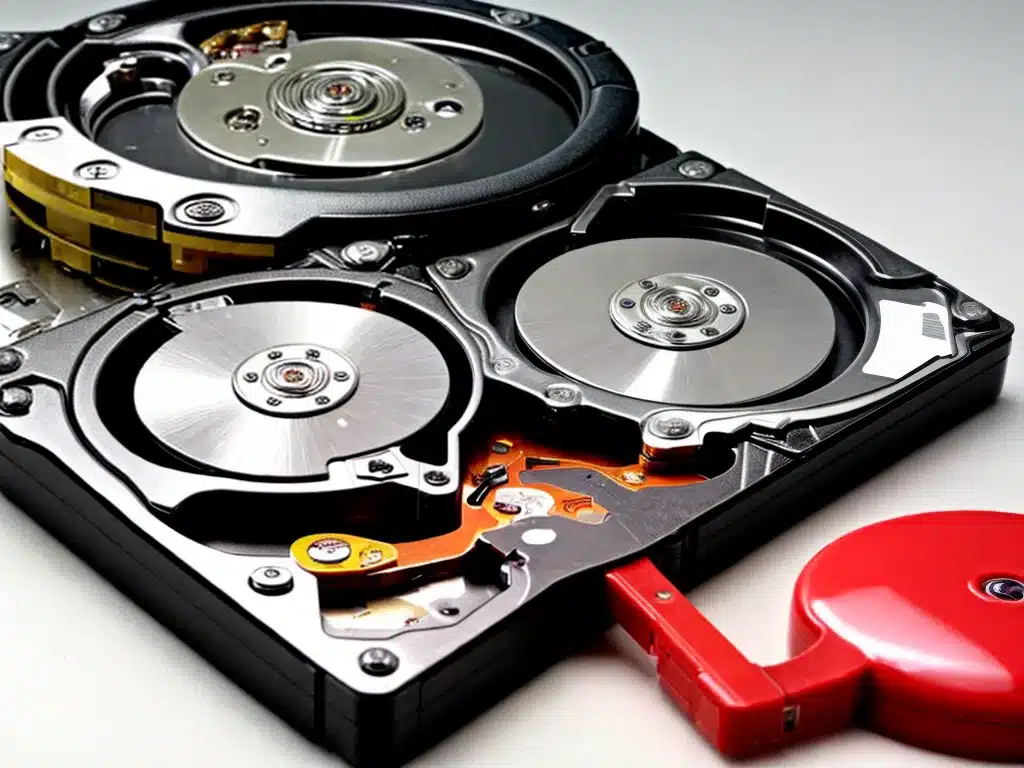
What Does It Mean When a Hard Drive Is Dead?
A hard drive is considered dead when it is no longer functioning and not accessible by the operating system. There are a few common signs that indicate a hard drive may be dead:
- The hard drive is not detected in BIOS or does not show up in disk management.
- The hard drive makes unusual clicking or beeping noises.
- The hard drive fails to spin up.
- Data cannot be accessed and the drive reports input/output errors.
- The hard drive suffers from physical damage due to overheating, water exposure, etc.
Essentially, a dead hard drive has some kind of mechanical or electronic failure that prevents it from being mounted by the OS and accessed normally. The drive itself may have failed or the service area that interacts between the OS and drive.
Why Is Data Recovery From a Dead Drive Difficult?
Recovering data from a dead hard drive is challenging because the drive cannot communicate normally with the OS or host controller. When a drive fails, critical file system data needed to mount and read the drive may be corrupted or inaccessible.
Some key reasons why data recovery is difficult include:
-
Inaccessible platters – If the drive cannot spin up, the physical platters where data is stored cannot be read using normal methods. Special tools are required.
-
Damaged components – Head crashes, failed motors, and PCB issues can cause hardware damage that prevents standard data access.
-
Corrupted file system – File systems like NTFS and FAT maintain data on how files are organized and stored. If this critical data is corrupted, the files are essentially lost.
-
Overwritten data – Continued use of a failing drive increases the chance of OSes overwriting files previously stored on bad sectors.
So in summary, dead drives have major physical or logical failures that block standard ways of interacting with the stored data. Specialized tools and techniques are needed to recover data from these non-functioning drives.
Data Recovery Options for Dead Hard Drives
When faced with a dead hard drive, there a few main options to recover the data depending on factors like:
- Cause of failure (physical vs logical)
- Importance of the lost data
- Cost
Here are some common recovery options:
Use Data Recovery Software
Data recovery software can be used if the drive is still partially accessible and has logical failures rather than physical. Software can bypass corrupted files system issues and rebuild partition tables to regain access.
Pros:
- Does not require disassembling the drive
- Lower cost option compared to professional recovery
- Allows recovery from logical failures
Cons:
- Ineffective for mechanical problems
- May take days to scan and recover data
- Risk of overwriting data during recovery process
Professional Data Recovery Service
For drives with physical damage or complex logical failures, professional data recovery may be necessary. They use specialized tools like cleanrooms and platter transplants.
Pros:
-Highest chance of recovery for physical issues
-Proper techniques prevent overwriting data
-Experience with complex failure scenarios
Cons:
- Very expensive starting around $500+
- Time consuming process taking days or weeks
DIY Mechanical Repair
With some mechanical skill and proper tools, you can disassemble and repair a dead drive to recover data yourself. For example, swapping PCB boards or drive heads.
Pros:
- Full control over the repair process
- Lower cost than professional service
Cons:
- High chance of making issues worse
- Does not help with logical failures
- Requires specialized tools and skills
Best Practices for Recovering Data From Dead Drives
If faced with a dead hard drive, here are some best practices to follow for data recovery:
-
Stop using the drive immediately – Continued use can further corrupt data and lower chances of recovery.
-
Do not open the drive – Exposing the platters to dust will permanently damage them. Only open in a cleanroom environment.
-
Clone the drive – Clone failing drives sector-by-sector before attempting recovery. Work off the clone to avoid corrupting the original.
-
Determine failure cause – Decide if the issue is physical or logical to pick the best recovery method. Look for signs like drive sounds and errors.
-
Use a reputable recovery company – Thoroughly research companies for best results if using a professional service. Beware of scams.
-
Prioritize important data – Some data may be unrecoverable. Focus recovery efforts on your most important files.
Following best practices maximizes the chances of successfully recovering critical files from a dead drive. Act quickly, do no further damage, and use the method most suitable to the failure.
Closing Thoughts on Dead Hard Drive Data Recovery
Recovering data from a dead hard drive is a challenging but possible process. The key is quickly moving the drive to a stable environment and determining the cause of failure to pick an effective recovery method. While an intensive process, data recovery allows you to regain lost files when everything seems lost. With proper tools, techniques, time, and care, you can rescue your valuable data even from a dead drive.












